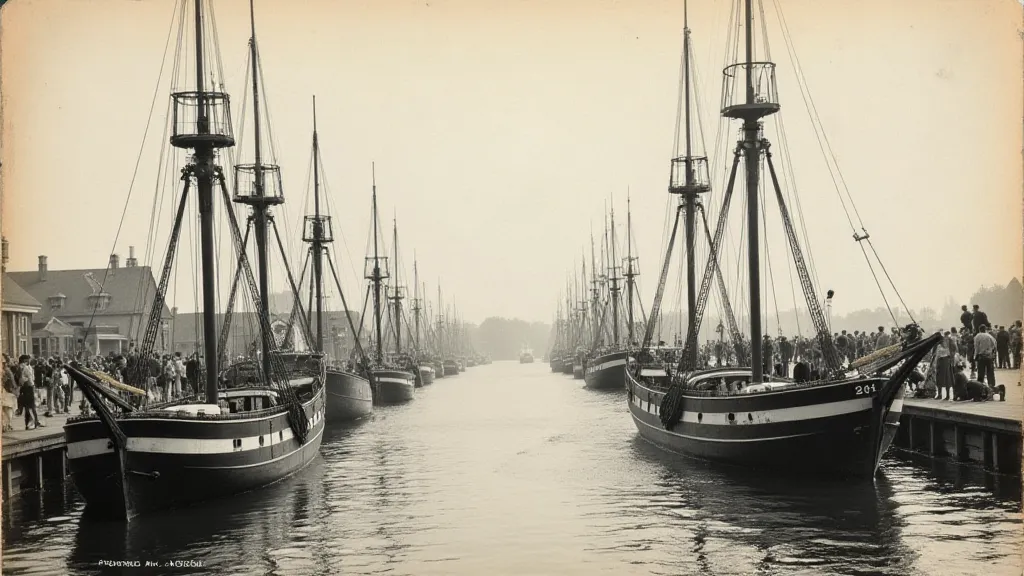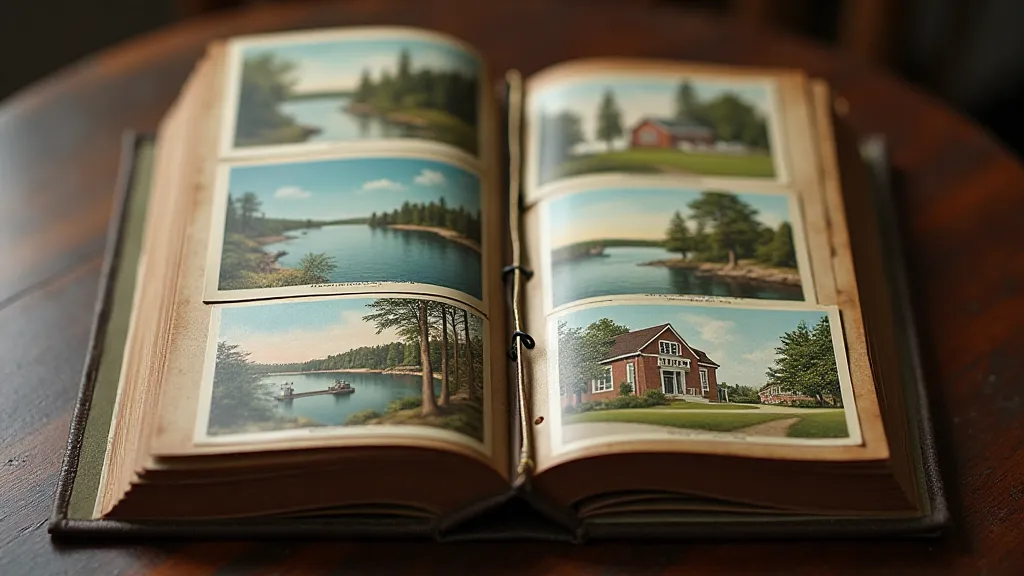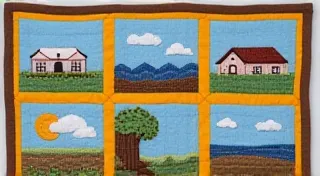Frozen in Time: The Postcard as a Temporal Artifact of a Bygone Maine
There’s a peculiar magic in holding a vintage postcard. It's more than just cardboard and a faded image; it's a tiny window into a lost world. Especially when that postcard depicts Maine – a landscape steeped in history, resilience, and a timeless beauty that postcards have long attempted to capture. As collectors, we aren't just accumulating images; we're gathering echoes of lives lived, moments cherished, and a Maine that, in many ways, exists only within these fragile pieces of paper.
My own fascination began with a single postcard: a sepia-toned view of Boothbay Harbor, circa 1910. My grandmother, a lifelong resident of the Kennebec Valley, had tucked it away in a box of family treasures. It wasn't particularly rare or valuable, but seeing that harbor – a bustling hub of shipbuilding and fishing – frozen in a moment nearly a century past stirred something deep within me. The boats were different, the buildings were different, and even the light seemed different. It felt like touching the past.
The Rise of the Maine Postcard Boom
The late 19th and early 20th centuries witnessed a phenomenal explosion in postcard production and popularity, and Maine was a prime location for this blossoming industry. The invention of the half-tone printing process in the 1880s made mass-producing images significantly cheaper and easier, fueling a worldwide craze for postcards. Traveling was becoming more accessible, and the relatively new postal rates for cards, introduced in 1898, made them a remarkably affordable way to stay connected. Suddenly, people could send a quick visual message across vast distances – a dramatic shift from the lengthy, often formal letters of the time.
Maine’s rugged coastline, picturesque towns, and burgeoning industries—lumber, shipbuilding, and tourism—made it a particularly attractive subject. Photographers flocked to the state, eager to document its beauty and charm. Companies like the Detroit Publishing Company and the Rotogravure Association of America commissioned extensive photographic series of Maine's most iconic locations. Many local photographers established their own studios, producing a diverse range of views, from sweeping landscapes to charming scenes of everyday life.

Beyond the Scenery: A Window into Daily Life
While sweeping vistas of Acadia’s granite peaks and the sandy shores of Ogunquit are readily available, the most compelling Maine postcards often reveal glimpses into the lives of the people who called the state home. There are cards showing lumber camps teeming with workers, their faces etched with the hardships of the labor. Others depict prosperous shipyards, the heart of countless coastal communities. Many showcase the burgeoning tourism industry – grand hotels overlooking picturesque harbors, families enjoying picnics on the beach, and visitors posing for photographs in front of historic landmarks.
These aren't just pretty pictures; they’re social documents. They offer insights into the fashions of the day, the types of transportation used, and the aspirations and values of a bygone era. You see the evidence of Maine's industrial heart, the vital role that fishing played, and the quiet dignity of rural life. The architecture, too, speaks volumes – the Victorian grandeur of Kennebunkport’s cottages, the sturdy clapboard homes of Aroostook County, the imposing presence of the Katahdin Iron Works. Often, these images capture the essence of a community, evoking a sense of place that transcends the mere depiction of buildings or landscapes. Imagine holding a card from a mill town, transported back to an era when those mills were the lifeblood of countless families. It’s a powerful connection, and reminds us how crucial these images are to understanding Maine’s past – a focus beautifully explored in related collections examining the Mill Town’s Reflection, revealing their stories and struggles.
The Craftsmanship & Artistic Touch
It’s important to appreciate the artistry involved in creating these vintage postcards. Early postcards often featured intricate hand-tinting, where artists meticulously added color to black and white photographs to create a more vibrant and appealing image. This process required a significant level of skill and artistic talent, and many of these hand-colored postcards are quite valuable today. Even the photographic processes themselves – the meticulous glass plate negatives, the careful printing techniques – demanded precision and a dedication to craft.
The typography also played a crucial role in the postcard’s overall appeal. Elaborate, decorative fonts were often used to highlight the town name or a brief description of the scene. The choice of font, the arrangement of the text, and the overall design were all carefully considered to create a visually appealing and memorable piece.

Condition & Preservation – Caring for History
Like any antique, vintage postcards are fragile and susceptible to damage. Exposure to sunlight, moisture, and improper handling can cause fading, discoloration, and tearing. Collectors often take great care to preserve their postcards, storing them in acid-free sleeves and albums. Gentle cleaning with a soft brush can remove surface dust and debris, but aggressive cleaning methods should be avoided, as they can damage the image.
Restoration is a controversial topic within the postcard collecting world. While some collectors advocate for preserving the original condition of postcards, others believe that minor repairs and retouching can enhance their appearance. However, any restoration work should be done by a qualified professional who understands the delicate nature of vintage paper and inks.
More Than a Picture: Seasonal Cycles and Memory
Many postcards depict scenes tied to the agricultural rhythms of Maine—harvests overflowing from orchards, farmers tending their fields, the bustle of county fairs. These images serve as potent reminders of a time when rural life was inextricably linked to the land. The changing seasons, so vital to Maine’s identity, are captured in these small, paper memories, evoking a profound sense of nostalgia. Collectors who are especially interested in these types of images often appreciate the details of the changing landscape, and the stories connected to the changing seasons and local harvest traditions, which are echoed in collections such as The Orchard's Remembrance, reflecting on how the changing seasons impact the identity and history of Maine.
Community Identity and the Power of Place
Beyond the individual scenes, postcards often revealed the collective identity of Maine communities. They served as visual ambassadors, showcasing the unique character of each town and region. This connection to a specific place, its people, and its traditions is what makes these postcards so much more than simple souvenirs – they are tangible links to a shared heritage. A postcard from a small coastal village, for instance, might portray not only the scenic beauty of the harbor but also the resilience and spirit of the people who called that place home. They fostered a sense of belonging and shared experience, especially as people moved and needed a connection to their home communities. Furthermore, these cards were a way for communities to highlight their industries, successes, and strengths – visually demonstrating their value and unique contributions to the state. The preservation of these visual representations is crucial to understanding the evolution of Maine's diverse communities and the unique cultural threads that weave throughout the state. Exploring the nuances of these communal bonds, and how they are visually represented, is a compelling area of study for postcard enthusiasts, and is thoughtfully examined in collections that explore A Patchwork of Pines, which focus on how these images reflect the identity of various Maine communities.
The Collector’s Perspective: A Window to Understanding
For collectors, these postcards are more than just objects of beauty or curiosity. They're portals to the past, offering glimpses into the lives, customs, and values of a bygone era. Each postcard tells a story, inviting us to imagine the lives of the people who sent and received it. The simple act of holding a vintage postcard connects us to the people who lived and worked in Maine a century ago, making history feel more tangible and accessible. Many collectors choose to specialize in particular themes or regions, building collections that tell a broader narrative about Maine’s past. The stories behind these postcards are as fascinating as the images themselves, revealing a rich tapestry of human experience.
A Lost World, Captured in Paper
Holding a vintage Maine postcard is more than just possessing a piece of paper; it's holding a tangible connection to the past. It's a quiet conversation with those who lived and worked in Maine a century ago. It’s a reminder of the state’s rich history and enduring beauty. It’s a testament to the power of a simple image to evoke emotions, tell stories, and transport us to a time long gone.
These little windows into a bygone Maine offer a poignant glimpse of a world that, while fundamentally altered by time, continues to resonate with a unique charm and enduring appeal. The essence of the Maine spirit – its resilience, its independence, its connection to the land – shines brightly within these fragile pieces of paper, frozen in time, waiting to be rediscovered and appreciated.






